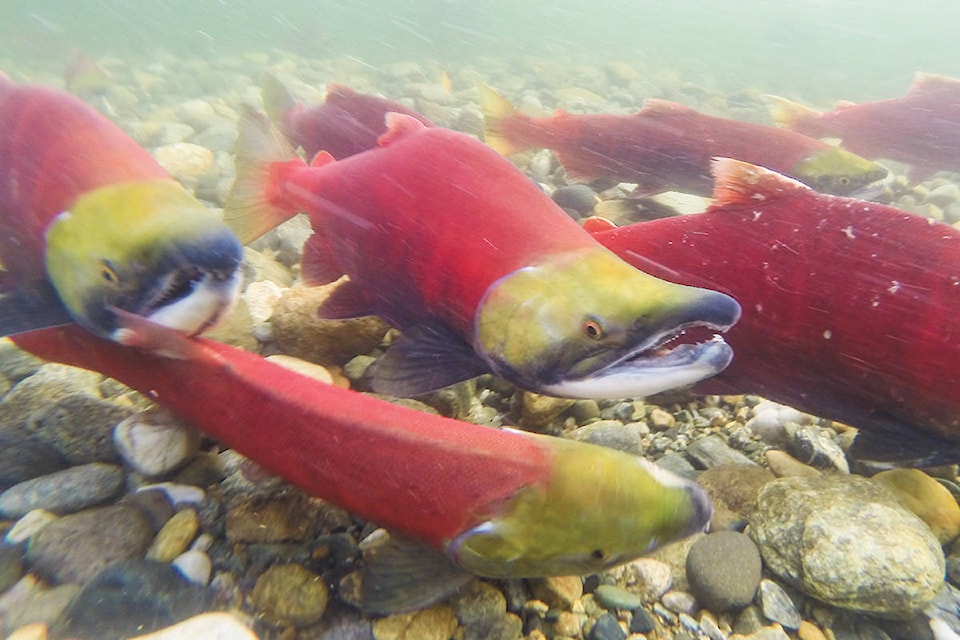As I sat in my boat out on Mabel Lake last week looking down into the water at all the fish hunkered down at the bottom along the shoal, just inside drop-off, it was obvious that all the warm weather we’ve been having is beginning to have an effect on fishing.
It has been hot to say the least. Lake temperatures are high and water levels in many lakes are low. Not good for fishing and most certainly not good for the fish.
As weather temperatures rise, oxygen levels in the water become depleted and fish become lethargic and feed much less actively during the day. It is only as the temperatures drop in the evening that fish will begin foraging for food. Fishing in the evening is an option, but stressed fish in the daylight hours tend to head into deeper waters where the water is cooler even though there is less food - not great for fishing. Things will, however, improve in the fall when water temperatures drop and fish again start to feed more actively.
So the question arises: how are prolonged warm water temperatures going to affect this year’s sockeye salmon runs this coming October?
Related: Column: Time running out for sockeye
Earlier this year (January), Fisheries and Oceans Canada estimated 14 million sockeye salmon should be returning to the Fraser River this fall to spawn; however, unusually warm weather and water conditions, combined with low sockeye survival rates in the ocean over the past three years, may adversely change everything. A more recent report (July) released by the DFO states, “the river might see as few as 5.3 million sockeye.” Prolonged warm weather and subsequent warm water temperatures may also delay their migration and accelerate disease in fish stocks that are already stressed. Added to this, the Fraser River’s water level is about 20 per cent lower than average due to early spring flooding. Things are looking uncertain to say the least.
“This is a big year in the theoretical sense,” says Eric Taylor, a UBC fish ecologist and chair of the Committee on the Status of Endangered Wildlife in Canada (COSEWIC), which has assessed the status of Fraser River sockeye. “A small change in ocean temperature can have a huge impact. If the conditions aren’t right in the environment… then the fish aren’t going to show up, and of course that’s happened in the past.”
Studies conducted last fall by COSEWIC found that eight separate populations of Fraser River sockeye are in such decline that they should be legally protected under federal Species at Risk legislation.
Taylor says that signs of trouble on the Fraser River system go beyond the sockeye salmon.
“There are lots of signals that salmon and sea run trout in the Fraser River are not doing well,” said Taylor. “This has been a persistent decline since the mid-80’s.
It will be very interesting to see how many sockeye do return to spawn this fall, especially to the Adams River. Late summer-run Adams River sockeye will account for about half the total Fraser River system sockeye return for this year, with fish from the Chilko and Quesnel rivers contributing another quarter of the total return. If the Adams River sockeye run into trouble, the whole of the Fraser run will be in serious, serious trouble.
Related: Shuswap sockeye returns low, conditions better in Scotch Creek
We have had study after study, not to mention a number of commissions, including the $37 million Cohen Commission of Inquiry into the Decline of Sockeye Salmon in the Fraser River – the most comprehensive review of Pacific salmon management in Canadian history. The Commission tabled its final report to the government in October 2012 along with 75 recommendations. The report also provided a plan to restore Pacific salmon populations as well as re-establish sustainable communities and economies that depend on the salmon along with attached deadlines for implementation.
While the DFO states that it is following the commission’s recommendations and, “has reviewed each recommendation to ensure that DFO is doing all that it can within its mandate and available resources to address the health and long-term sustainability of Fraser River sockeye salmon stocks, as well as wild Pacific salmon more broadly,” there are those of us who can only wonder what truly does lie in store for the sockeye. Who knows?
Meanwhile, the time draws nearer and nearer for the Adams River run. This year’s Adams River sockeye run could very well be the singularly most important run in history.
@SalmonArm
newsroom@saobserver.net
Like us on Facebook and follow us on Twitter
